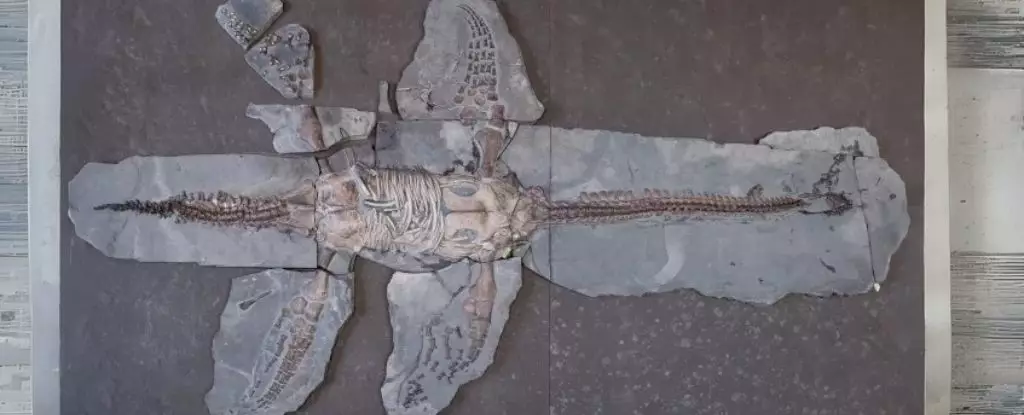Plesiosaurs, with their unique serpentine necks and distinct four-flippered bodies, were some of the most formidable marine predators during the Mesozoic Era. These prehistoric reptiles thrived in Earth’s oceans approximately 183 million years ago, during the Jurassic period, a time characterized by their remarkable diversity and dominance in marine ecosystems. Recent research, particularly that conducted by paleontologist Miguel Marx and his team from Lund University, has offered unprecedented insights into the physical characteristics and adaptations of plesiosaurs, specifically focusing on their fossilized remains and soft tissues.
The newly analyzed fossils provide a window into the morphology and evolutionary advancements of these fascinating animals. Contrary to the commonly held belief that plesiosaurs possessed a uniform skin texture, the findings suggest a more complex adaptation. Notably, analyses reveal that certain plesiosaurs had flipper scales akin to modern sea turtles, which could have served multifunctional purposes, such as enhancing swimming efficiency or providing grip on the ocean floor.
Plesiosaur fossils have been discovered around the globe, yet the lack of fossilized soft tissue samples has limited our understanding of their biology and ecology. The analysis of a nearly complete plesiosaur specimen, designated as MH 7, yielded insights that deepen our comprehension of their lifestyle. Measuring roughly 4.5 meters in length and excavated from Holzmaden, Germany, the MH 7 specimen is a treasure trove for paleontologists. The detailed investigation employed advanced microscopy and spectroscopy techniques to characterize the textures and materials of the fossilized remains, strengthening the resolve to connect ancient and modern marine life.
The study emphasizes not only the aesthetic qualities understood from these remains but also the indications that plesiosaurs might have been warm-blooded. Key observations, including the smooth texture of the tail skin juxtaposed with the rugged structure of the flipper skin, present compelling evidence of adaptive strategies for different habitats within their aquatic environments. The distinction in skin texture could imply specialized evolutionary pathways responding to ecological niches, such as buoyancy and thermal regulation.
A notable focus of the research surrounds the feeding habits of plesiosaurs, suggesting that they were adept bottom feeders. The scales found on the fore flippers could have been essential for traction while navigating the ocean floor during foraging activities, a behavior that has been identified through preserved feeding traces and gut contents indicative of a diet rich in bottom-dwelling organisms like snails and crustaceans.
Interestingly, the presence of pigment cells in the fossilized tail skin—absent in the tougher flipper regions—highlights the dynamic relationship between texture and environmental interaction. The significance of these structures suggests a complex evolution where plesiosaurs maintained some reptilian characteristics while adapting to their highly specialized marine habitat. This duality underscores the evolutionary pathway of these organisms, integrating both ancestral traits and adaptations shaped by their aquatic lifestyle.
The findings pave the way for deeper inquiries into the evolution of marine reptiles and the selective pressures that fostered such adaptations. The scales, particularly those located along the edges of the flippers, likely provided critical functional advantages that supported plesiosaurs throughout their evolutionary journey. As the researchers concluded, this extraordinary combination of features positioned them as one of the most successful groups of pelagic reptiles of their time.
The research on plesiosaurs reveals far more than just the physical form of these awe-inspiring creatures. It offers a capsule of knowledge that reflects the intricate interactions between anatomy, environment, and behavior in prehistoric ecosystems. By scrutinizing these newly examined specimens, we gain invaluable insights into the evolutionary strategies that enabled plesiosaurs to thrive in their aquatic world, echoing through the annals of time as an elegant testimony to the complexities of life on Earth.

